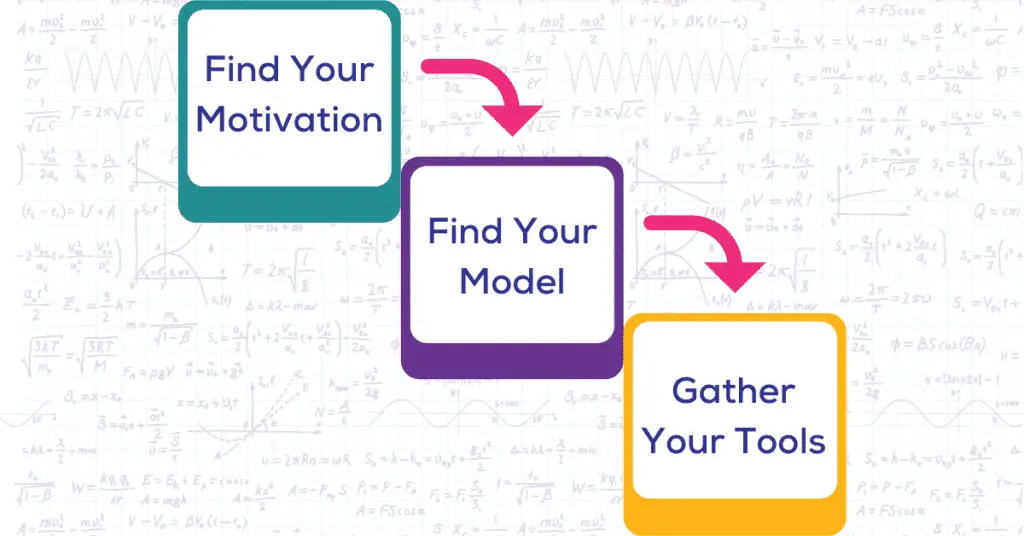The Common Core State Standards (CCSS) include eight “Mathematical Practices” that teachers and students are encouraged to use throughout their mathematical lives. These are different from the grade-level content standards in a few ways. Firstly, these Mathematical Practices are not grade-specific. Rather, they remain constant practices throughout the child’s education, with the hopes that they become habit. Further, as the words practice and habit imply, these are not mathematical procedures or rules, but are more akin to mindsets and broad strategies.
For a broad look at all eight Math Practices, check out the post What Are the Math Practices and What Do They Have to Do With Me? For a deeper dive into the other seven practices, check out the list at the bottom of this post.
The third CCSS Mathematical Practice, Constructing and Critiquing Arguments, refers to the practice of justifying or explaining your solutions and recognizing what’s good and what’s flawed about other people’s explanations.
In higher levels of mathematics, this takes the form of proofs, or proving that what you say is true. In all levels of mathematics, this is often what teachers mean when they ask students to show their work. Part of this standard is leaving explanations in a logical order that the reader can follow, communicating the steps effectively, analyzing and evaluating differences and similarities between examples, and recognizing and using counterexamples. Younger children will begin to do this through the use of pictures and verbal explanations. This standard also encompasses the ability to judge the rightness of other arguments, to compare arguments and determine which one is stronger, and to find holes and flaws in arguments.


So, how can we help our children (and even ourselves) construct and critique arguments at home?
This post was originally published at mathteacherbarbie.com. If you are viewing it somewhere else, you are viewing a stolen copy.
What does it mean to construct viable arguments?
Viable arguments have the following characteristics:
- You know and list or describe any assumptions you start with. Sometimes we don’t realize that we’re assuming something to start with, but usually we are. Recognizing and being able to articulate these strengthen our arguments by helping our readers or viewers know where we’re coming from.
- You state any conjectures, or guesses, about what results you expect or the kinds of results that would be reasonable.
- Your process follows a logical process of steps and presents them in a way that your readers or viewers can follow.
- You build on ideas that have been proven in the past. When you do so, you let your reader or viewer know what this was, and if applicable, where they can find more information about it.
- Break the argument into cases, subsets, or special cases if and when appropriate.
- If you introduce new ideas, tools, or thoughts, in the middle of the process, you define and describe these new ideas, tools, or thoughts so that the reader/viewer knows where they came from and what they mean.
- Your steps end in a result that can be summarized, and you state that result using natural language that works in the context and articulates the result clearly. If you made any conjectures, or guesses about the result, then you compare your result to the conjecture.
Putting these all together regularly is the result of a lot of practiced and advancement in this skill. Your child is still practicing these individual pieces, and only slowly over time will this come together for them (and for you if you practice as well). Don’t expect your child to be able to do all of this, and know that their teacher doesn’t expect them to either. This is the end goal after many years of practicing. This is also why these Mathematical Practices reach through all of the students’ years of schooling and are not part of the grade-level standards.
What is a counterexample?
A counterexample is a special case that meets the setup (assumptions and starting rules) but does not end in the desired conclusion or result. Typically, a counterexample is a specific instance that disproves a general rule. For example, my dog would be a counterexample to the statement “dogs hate vegetables” because broccoli is one of her favorite treats.

What does it mean to critique the reasoning of others?
Across the curriculum, your child will slowly learn to
- Identify logical flaws
- Find and describe relevant counterexamples, and know the value of these
- Acknowledge and identify special cases (and how/when this is different than a counterexample)
- Compare two arguments and determine which one is stronger, and/or which one works best in different situations or for different audiences
- Know correct logic from flawed logic
- Identify where and how logic is flawed
- Ask questions to clarify arguments
- Decide whether an argument makes sense, and whether the conclusion accurately follows
Learning to skillfully, kindly, and constructively critique others is a tremendous life skill to have. Think about the times others have given you feedback that has left you feeling both positive about the relationship and inspired to make adjustments and improvements. What did they do? How did they deliver the information? What did they say, and how did they say it (both with their words and their body language)? Then, how can you cultivate that in yourself and your children?
In any context, not just the math classroom, a valuable critique
- Is specific. What specifically makes the other person’s argument false? Where specifically did their reasoning lose you? What specific false ideas, assumptions, or prior results did they use that they maybe shouldn’t have?
- Focuses on the work, not the person. Each of us is constantly learning; each of us has bad days; each of us makes mistakes. The value of the person — whether student, teacher, parent, or anyone else — does not depend on the work they hand in or the arguments they make or fail to make. The work itself is what’s being critiqued here in an effort to either understand it better or to improve it in some way.
- Is limited to the most important parts. Too much information is overwhelming. If there are big-picture ideas that are missing or critical pieces, these are what the critique should focus on. Spelling, grammar, and smaller details can wait until the big-picture ideas are taken care of.
All of these Mathematical Practices are life skills. Like any life skill, they grow and develop over time and practice. Much of what’s described in this article are ideals. Neither you, nor me, nor your child (nor your child’s teacher!) can be expected to live up to them all of the time. However, working together, we can build these to make the strongest, most respected and trustworthy generation yet.
Most of all, while you and your child develop and grow in these and other skills, both mathematical and non-mathematical,
You’ve Got This!
For a deeper dive into all eight practices, check out the following posts:
MP1: Sense Making and Perseverence
MP2: Abstract and Quantitative Reasoning
MP5: Strategically Choosing and Using Tools
